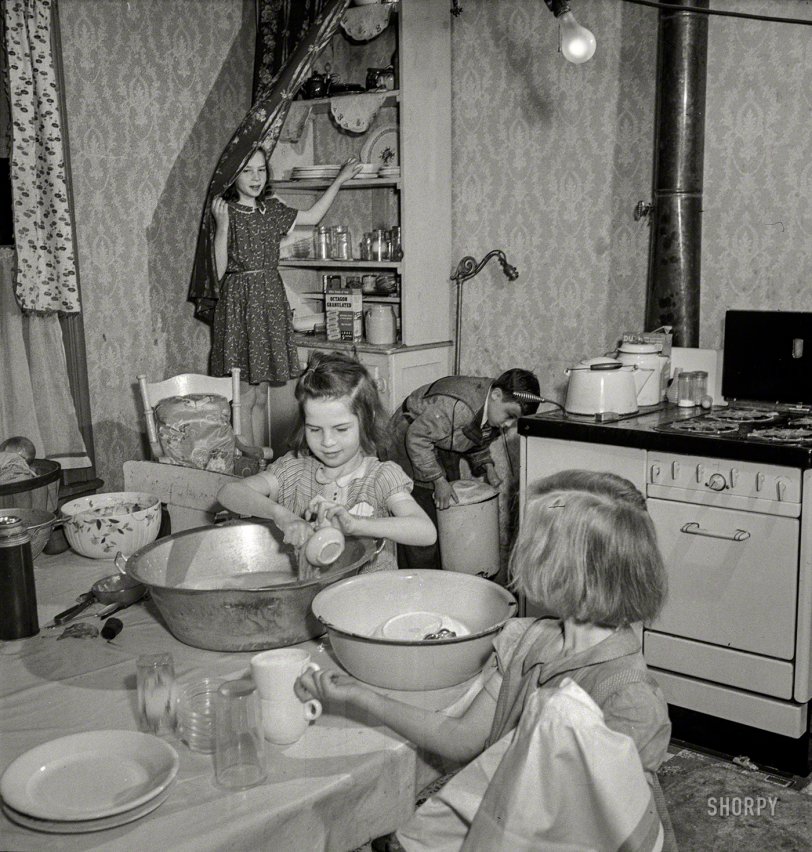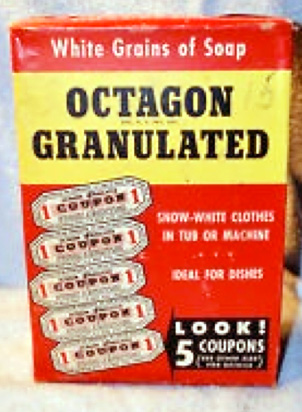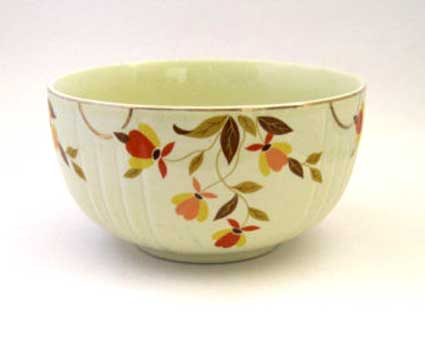


Framed or unframed, desk size to sofa size, printed by us in Arizona and Alabama since 2007. Explore now.
Shorpy is funded by you. Patreon contributors get an ad-free experience.
Learn more.

- Freeze Frame
- Texas Flyer wanted
- Just a Year Too Soon
- WWII -- Replacing men with women at the railroad crossing.
- Yes, Icing
- You kids drive me nuts!
- NOT An Easy Job
- I wonder
- Just add window boxes
- Icing Platform?
- Indiana Harbor Belt abides
- Freezing haze
- Corrections (for those who care)
- C&NW at Nelson
- Fallen Flags
- A dangerous job made worse
- Water Stop
- Passenger trains have right of way over freights?
- Coal
- Never ceases to amaze me.
- Still chuggin' (in model form)
- Great shot
- Westerly Breeze
- For the men, a trapeze
- Tickled
- Sense of loneliness ...
- 2 cents
- Charm City
- What an Outrage
- Brighton Park
Print Emporium
Sisters Grimm: 1943

May 1943. Buffalo, New York. "Patsy Grimm helping with housework. Their mother, a 26-year-old widow, is a crane operator at Pratt and Letchworth." Photo by Marjory Collins for the Office of War Information. View full size.
Dual duty
Up until 12 years ago I cooked on a 1927 cream and green porcelain stove that was gas on one side, cast iron trash burner on the other. It was built for burning paper but we also stoked it up with wood on cold days and it burned beautifully. Great stove, I do miss it. The top had removable metal covers and could be used for cooking. On another note, this woman has humbled me and I don't have any problems today.
Identifying old stuff
One question has been answered: That IS a dual-fuel stove. Never heard of that before but it sure looked like it. The other question is: What is the device behind the boy? (light fixture, less bulb is my best guess; water pump?)
[Floor lamp minus bulb and shade. -tterrace]
The Brother Grimm
Alton James Grimm is the boy's name. He is one year younger than his 11-year-old sister Beverly Ann.
The age of the mother, Thelma Grimm, is incorrectly stated. She was not 26 years old in 1943, she was 29. This puts her more in line with the ages of her children.
Thelma married the 32-year-old Alton R. Grimm right out of high school at age 17 in 1931. In early 1940 Alton R. Grimm was an inmate at the Buffalo State Hospital for the Insane later on that year he was buried in his home town of Cattaraugus, New York. He was 41.
[The boy is Peter Grimm. More Grimm photos and information here. - Dave]

Gas and oil maybe
Way back in my memory, I remember a two section stove similar to this one. One half was for cooking with a gas oven and gas burners but the other side (with the tea kettle) was warmed with heating oil and each night we kids had to take turns filling the oil can. It was filled from a huge drum of oil that was supplied by a local oil co. that was kept in the cellar (this was in Ct.). The filled can would then be placed upside down in a holder that dispensed the oil, via a coiled spring of some kind (a slow drip I assume), and that side of the stove was always warm enough to simmer pots of soup, stew, sauce, etc. all day or as long as desired and there was always a kettle on for tea, etc. that stayed hot. I was too young at that time to remember exactly how it worked but the can that was placed at the stove each night was probably about 3 to 4 gallons. We used the oil side of the stove only in the winter, not in the summer. One other thought; why is the male in the house always assigned to the garbage detail?
Wash basins
Up into the eighties, our summer place in Manitoba did not have hot and cold running water or a proper sewage hook-up, so we had to haul buckets from a nearby artesian well for all our water needs and we had to use kettles and metal pails on the stovetop for hot water. Doing the dishes, as in this photo, meant one basin for washing and one for rinsing. When we finally dug our own well and got proper plumbing, it was like entering the modern age. But I actually have fond memories of the basins. There were five kids, and my mom always devised a fair schedule for washing and drying the dishes.
DUZ Detergent
The open box on the stove is DUZ detergent. Growing up in Ohio in the 40's - 50's that product was always in the kitchen.
Grimm names
According to the Library of Congress archives, the names and ages of the girls were Beverly Ann, eleven, Mary, eight, and Patsy Grimm six. There is no indication who the boy was. The kicker was that my uncle worked at Pratt & Letchworth back in the day, and might have known their mother.
Dual Fuel
My parents bought a Fairmount range in 1946, similar in design as pictured. The left side had kerosene burners, and was used as a space heater since kitchens typically were not tied in to the central heating system.
In the 1970's I removed the kerosene unit and converted it to a wood range. I still have it, can't be beat for baking and roasting.
Who Knew?
For those who, like me, may have thought the name of the pattern of that bowl was "Jewel Tea," it wasn't. That's just what your Grandma called it because it came as a premium with Jewel Tea.
Octagon Granulated
You may think it's sugar but it's laundry detergent. It may also double as dishwashing detergent. Just keep it off your Kellog's Corn Flakes.

What a shame
that kids had to live in a black and white world back then.
New one to me
I don't think I've ever seen a dual fuel stove like this. I assume the left side range is coal fired in lieu of a water heater. Any Shorpyite know?
[The even older Wedgewood gas range we had pre-1955 was this basic configuration, and the left side was a trash burner. -tterrace]
That's interesting. Hey tterrace, did that incinerator side heat anything above?
[I imagine it was possible, but I don't remember too much about it. I was 8 when it was replaced with the new O'Keefe & Merritt in 1955. -tterrace]

























On Shorpy:
Today’s Top 5